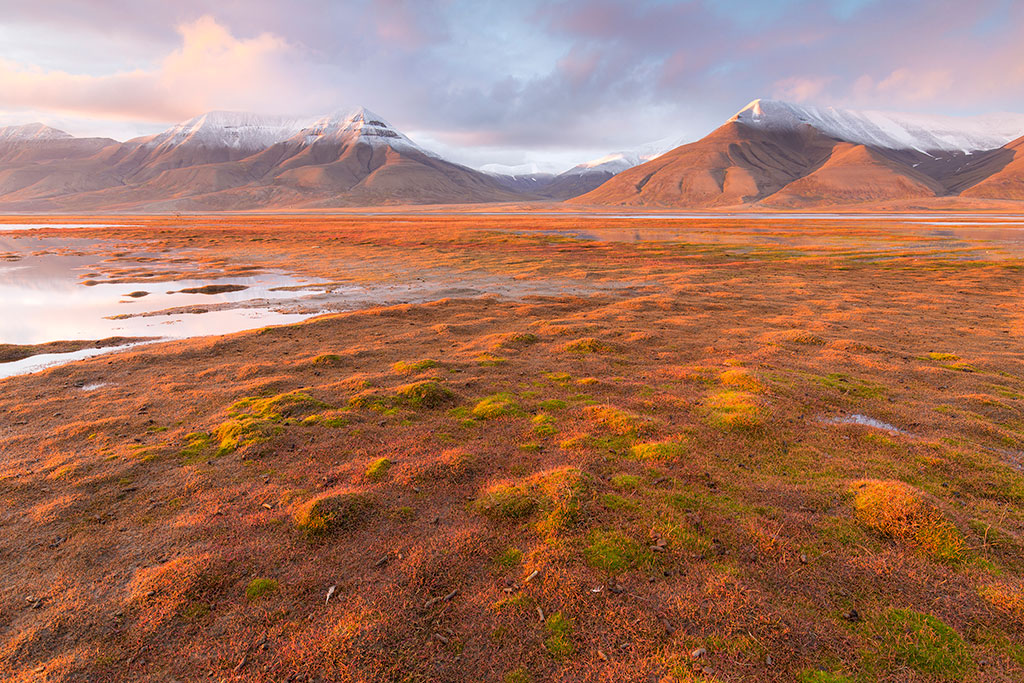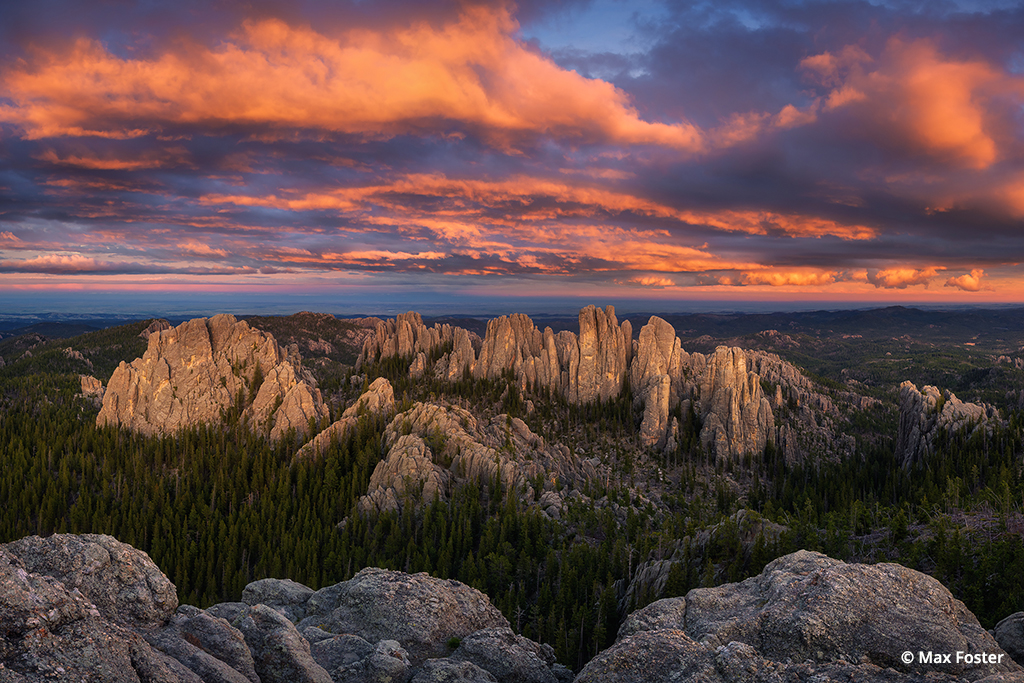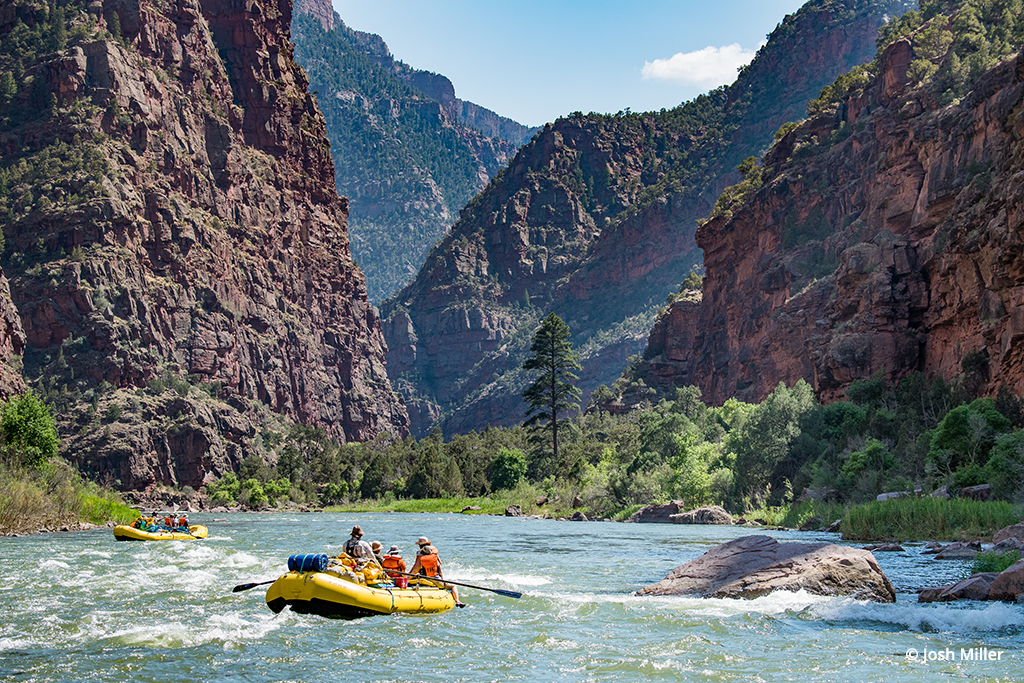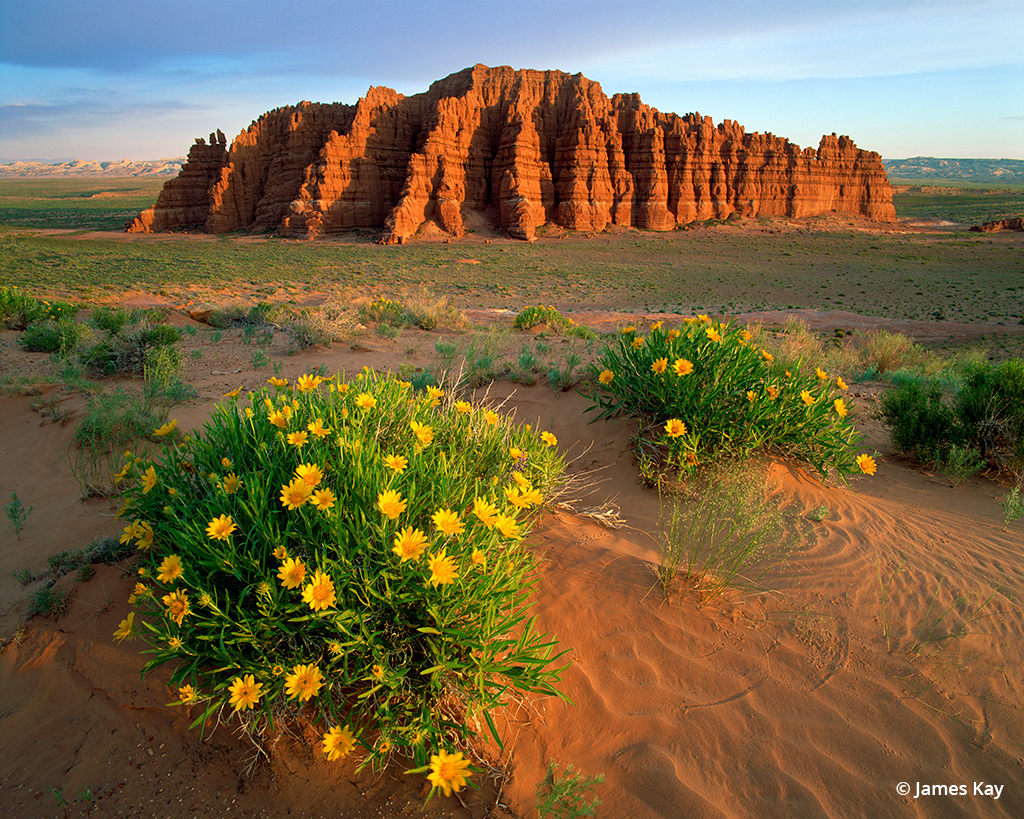Advertisement
Advertisement
Read Next

Why You Should Visit Svalbard In Norway For Photography
Svalbard in Norway features untouched...
The Needles
The Black Hills of South Dakota cover...
Dinosaur Adventure!
After feeling trapped at home for the...
Wildlands Of Utah
Look outside Utah's national parks to...Advertisement


The State Of Our Art
In celebration of this month’s publication of the 100th “World View” column by legendary photographer Frans Lanting, we discuss the profound changes the Santa Cruz, California-based photographer has both witnessed and utilized over his prodigious career.
OP: Some of the most dramatic changes in the history of our medium have taken place between the time you first sat down at a keyboard to share your thoughts with our readers.
Frans Lanting: It has been, and this is an opportunity for us to look back at some of the enormous changes, including our move from film to digital.
Over the past 20-plus years, the changes in nature photography have been nothing short of revolutionary. During all of that time, Frans Lanting has been at the cutting edge. The longtime National Geographic photographer and Outdoor Photographer “World View” columnist has evolved with the technology to work and shoot differently.
OP: What cameras are you working with today, and why?
Lanting: The first digital camera I used seriously was Nikon’s D1 and I still use Nikon DSLRs. I love their latest version, the D4S, because of the very high frame rate and the sensor sensitivity that enables me to go to 100,000 ISO.
OP: Is that actually a usable ISO?
Lanting: I think it is, under the right circumstances. You don’t apply that kind of sensitivity to the middle of the day, but at the edges of where there’s any little light that can illuminate a subject, I’m not afraid of pushing things to the max. It’s better to get a certain kind of image of something than no image at all. I can create images at 50,000 ISO that are quite publishable. Compare that to the old days of ISO 50 for Velvia, which could be stretched with just one-stop push-processing. Beyond that there would be severe image degradation. Ektachrome could be pushed to a maximum of 800, but there was very little color left. These days I can work with moonlight and low-output LEDs.
I embraced Velvia after many years of Kodachrome. Fuji introduced a whole new color gamut. But now we can mimic the particular hues and qualities of Kodachrome and Velvia very easily in custom settings in Lightroom.
OP: Have technological advances translated into you carrying more or less equipment on extended location shoots?
Lanting: Some things have become more compact. I remember post-9/11, showing up at the airport checkpoint and having hundreds of rolls swabbed and tested. That really contributed to the speed with which many photographers moved into digital. Think of the ease now—a laptop with a couple of hard drives and some CompactFlash cards to replace 600 rolls of film. That’s a revolution.
Lanting has a reputation for being erudite, exacting and patient in his pursuit of a photograph. The Dutch-born photographer is a true observer of the natural world. The days of National Geographic expeditions into the bush for months at a time have faded in the new media paradigm, but that hasn’t stopped Lanting from going to extreme lengths to get the important photographs. The great wildlife photographers will tell you that it’s all about showing behavior. It’s something that Lanting has a true gift for doing.
OP: We now have cards with incredible storage space, up to 512 gigabytes, though some photographers feel it’s better not to put all their eggs into one basket.
Lanting: I’m conservative. I’d rather spread out the risk across multiple cards. That’s the precious original capture. Unless you have a 100% fail-safe capture medium, you could really sink yourself. I use bigger cards when I shoot video—32 to 64 gigs—and smaller cards—16 to 32 gigs—for stills.
OP: Some of your most iconic shots from your film days, such as the lionesses with the orange sky or the elephants reflected in water with a dove caught in midflight, would still have to be captured with a mix of ambient and artificial light, wouldn’t they?
Lanting: The use of flash was a way to extend the reach of photography into what would have otherwise been an impossible situation. If I hadn’t used flash with those lions, they would have been a blur in the dark. That image involved computing strobe output manually in a very precarious situation. I’m crouched in the grass with two lionesses in front of me at a close distance with nothing in between us because the strobes wouldn’t carry very far. This was a pride which I had gotten to know quite well, but I was still pushing the boundaries. I had to alternate between paying attention to the lionesses and all the settings on the camera and the strobe. I had to pretty much compute everything manually—the camera settings, the strobe settings. I couldn’t rely on integrated metering and integrated exposure settings that are routine these days.
I pushed my film to 400 ISO. That gave me enough speed and enough depth of field to have sharpness and lack of movement. I used a Metz strobe with an early Fresnel attachment rigged up right next to my camera. I was by myself. I had gotten use to tracking the lions by myself and was with them day and night. When you do that, you get into a rhythm where you can take some risks. When the lions seemed to be relaxed and comfortable, I started probing situations.
Flash was a way to push things further. Then I began to use flash-fill techniques to start creating mood pictures and combine different kinds of light sources in a more creative way. My image of a Rafflesia, the largest flower on earth, was made with miniature pocket strobes powered with AAA batteries that were hidden inside and underneath the flower. I wanted to make a photo that was more evocative than the standard pictures I had seen published in textbooks that were very dark and uninspiring. But calibrating the output was very difficult. I had to stick little gels on them to balance their output and to make sure that none were burning out the flower. Imagine being in a jungle in Borneo with a giant flower that lasts only 24 hours and you’re many days away from the nearest film processing facility. My secret was to have a dedicated Polaroid back on one of my Nikon cameras for field-testing. That gave me readouts on little Polaroid prints of the results of difficult lighting techniques. It was an analog version of our current instant playback mode on our digital cameras. We can’t imagine doing that anymore, shooting blind and experimenting with things without being able to know right away whether or not you’re actually in the zone.
OP: Especially with the limited latitude you had with transparency film. For the elephants at a water hole with a dove in flight, how did you do it, and would digital change your approach?
Lanting: It would still require the same physical challenge—getting out of a vehicle and wading into a water hole to capture a perfect reflection, as well as a feeling of proximity of being in the middle of that scene. You don’t get that feeling shooting from a Land Rover. You need to be out there. But then the technique of it, I don’t think you could replicate it any other way. LED lights wouldn’t be strong enough, and they would be too invasive to the animals anyway. Even with the latitude with modern digital capture, it would be difficult to replicate this. I still would work with a strobe for that image. They’re still wonderful ways to bringing light to where it doesn’t exist. Modern strobes, by the way, are another major improvement compared with the old days where you had to compute the output manually. I use primarily compact Nikon Speedlights, often with modifiers. I also use LED lights and other light sources. When it comes to strobes, I’m very compact. If I need to do bigger productions, I’ll work with assistants and spec out a custom lighting solution.
OP: When you started your career, you were often in extreme locations where you would be cut off from the rest of the world. Since then, we’ve gone from complete isolation to almost total accessibility. Are there cons to being so connected?
Lanting: It’s definitely a different experience sitting in a mud hut in the heart of the Congo, totally isolated from the rest of the world as I was years ago. The only way to get communications out there then was to hire someone locally to hand-carry a letter for 24 hours through the jungle to a mission post where it would be translated into a crackling radio signal. That’s hard to imagine these days with SAT phones and cell phones everywhere.
There’s no better feeling than to be immersed in a place and to be completely removed from outside distractions. Isn’t that what photography is all about? Losing yourself in a new world and a new subject, and exclude everything else for a while. But these days I can usually access the Internet no matter where I am. That’s also a big positive.
OP: When you were doing National Geographic projects early in your career, time had a different meaning than now in terms of lengths of assignments and so on.
Lanting: Indeed, time has a different meaning these days. Everything is going faster and faster. The days of spending two or three months in one place without interruption are now very rare. The world has become more complex and at the same time much more connected. Back in the 1980s, it was much harder to mount expeditions. You’d spend a significant amount of time at home to ramp something up.
OP: Throughout your career, you’ve been very inventive in finding solutions to a photographic problem. When you were in the Antarctic with penguins, you applied some sort of pole system, for instance, to achieve a dramatic high-angle shot.
Lanting: That was a setup we created with the help of technicians who enabled me to create drone-like views of an emperor penguin colony in Antarctica. The camera was connected with a monitor, and I had a swivel on top of a pole so I could move the camera around. This was an analog camera, but we attached a video eye to it so I could see what the camera saw on a monitor.
OP: How would you do this same shot these days?
Lanting: One way would be to fly a drone. But you can’t just fly a drone over the wildlife in Antarctica without permits. Another way would be to rig up a similar extended monopod with a digital camera, then put it on a repeat mode and move it around, then bring it down and do the playback. Or I could use a Wi-Fi connection to a laptop or iPad.
OP: You fly your D4S on a drone?
Lanting: For many applications, I don’t think it’s necessary to fly a heavy DSLR. We use lighter drones. Usually the drone views rely on unique points of view rather than ultimate resolution. We use DJI consumer drones. If I need a heavier-duty application, I’ll hire somebody with a drone that can handle a bigger payload. I use the DJI’s built-in cameras that shoot both stills and video footage.
OP: Do you work with GoPros?
Lanting: I do. There’s an amazing proliferation of camera platforms these days, from the very high-quality DSLRs to the very convenient GoPro cameras, drones and the ubiquitous iPhones. I use the iPhone to take little snippets of what’s happening around me. It’s almost like a logbook, like a journal. I also carry a small mirrorless camera wherever I go, like the Sony RX100 III.
Technical innovations have made so much more possible. It has given rise to a proliferation of aesthetic styles and technical solutions that are also enabled by all the things that can happen to images after their original capture. Photography has been reinvented during the transformation from analog to digital—the way it’s captured, the way images are edited, the way images are processed and the way they’re distributed. It’s really quite amazing to contemplate how much things have changed.
OP: How do you store your images?
Lanting: We store a lot of film originals in a well-insulated warehouse. For the studio, we have a variety of storage mediums, from spinning disks as well as solid-state hard drives for critical storage. We burn a copy of our original shoots to a Blu-ray disk to have as an alternate archival storage medium. We have a sophisticated workflow process in the studio that governs how we move images from the capture stage to how we ingest them into our studio database and how they get exported to our online collection and out to clients. Digital is empowering. Today I can travel with my archive contained on a small portable hard drive.
OP: Do you use HDR at all?
Lanting: Not much. I’m a traditionalist. I still believe in the magic of that single ultimate frame. One of the recurring themes in the “World View” column has been the evolution of an image: how I see it in my mind’s eye, on location where I get an idea for something, then how I come up with technical solutions. It usually goes through a process of refining the image conceptually and refining the technical solutions. There’s often a magical ingredient of circumstance. Today I can stay in the moment and at the same time see what I’m doing.
The differences in the way Lanting worked with film (above) and in the digital era (below) are dramatic. There are still cases of gear to transport, but the sheer volume of equipment and supporting items, like bags and bags of film canisters, has decreased. This hasn’t just meant that it’s easier to travel. Lanting has been able to pursue photographs differently and, as a result, his work has progressed along with the technology.
What hasn’t changed is that if you want to work with the wonders and the unpredictabilities of the natural world, you still have to give yourself time. You have to work yourself into a situation. That’s still the magic ingredient for any great image, whether it’s captured in the analog days or in our new digital era. I usually have to become intimate with my subjects before the magic moment can happen—and it doesn’t matter whether it’s an animal or a human being. Photography still requires fundamental creative and emotional involvement of a photographer with a subject.
What has changed is that many more people feel inspired to take pictures now that the tools have become so easy to use and so ever-present. There’s a spontaneity now to photography that was much harder to apply in the past, and it has given a huge new extension to the more deliberate, belabored kinds of photography that we know from before.
OP: You could have all the best equipment in the world, but if you don’t do the work….
Lanting: You still have to get out there. You still have to get involved and immerse yourself—that’s the magic of photography. It gives me an alibi and an excuse, and it gives me the tools and the incentive to lose myself in another world and to bring something back from that encounter that can be shared with people all over the world.
See more of Frans Lanting‘s photography and learn about his latest workshops at franslanting.com.